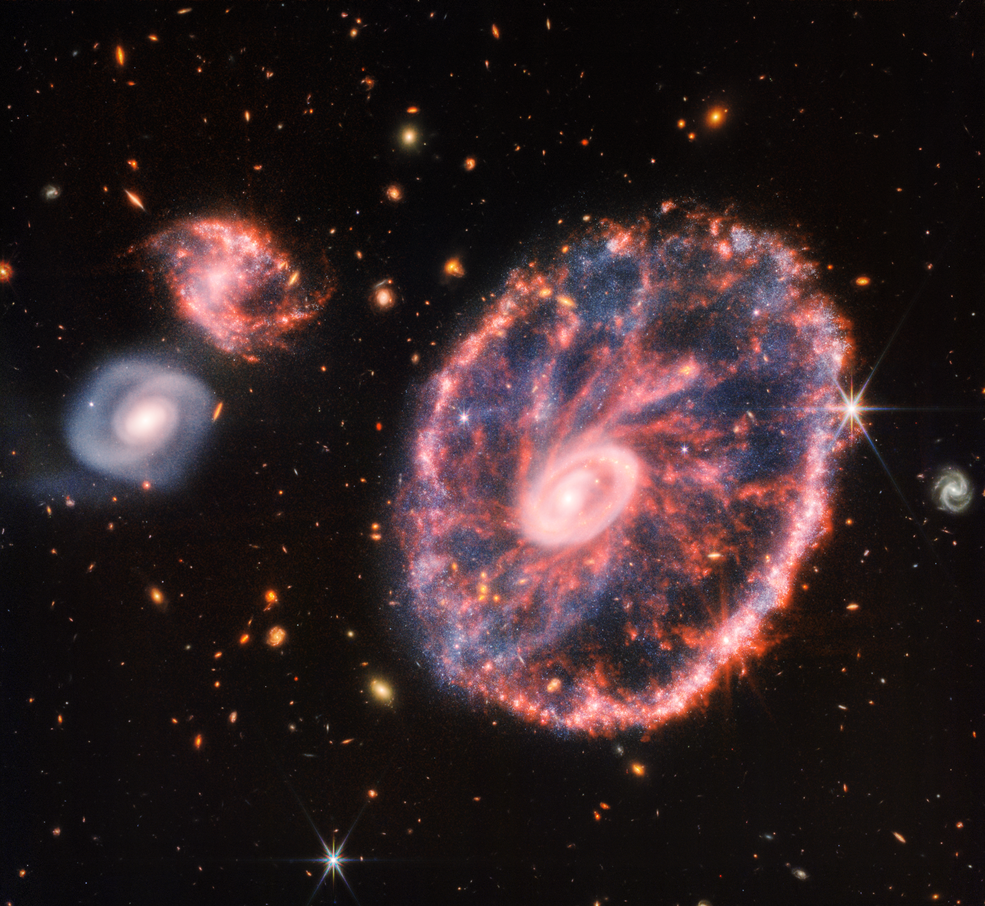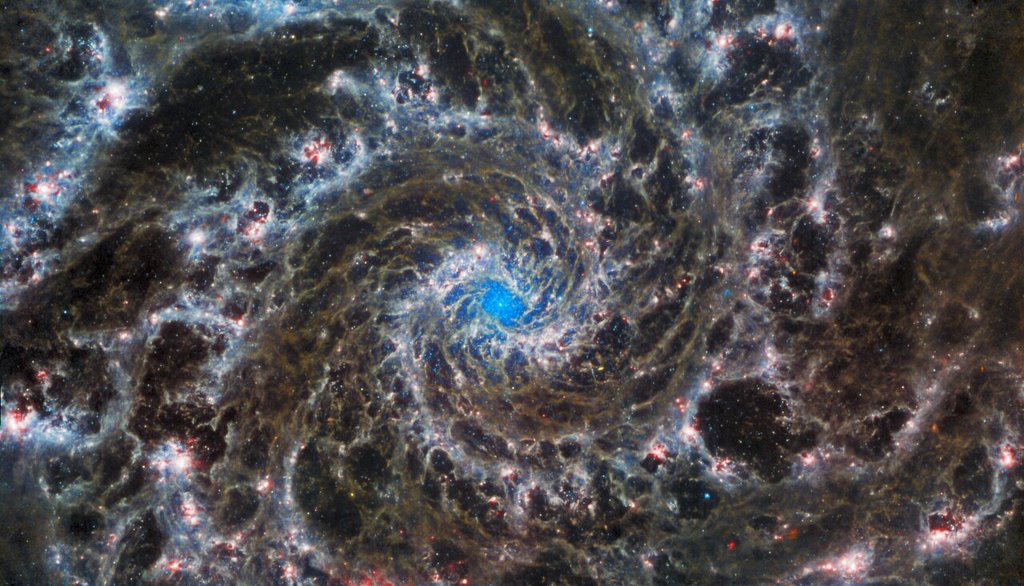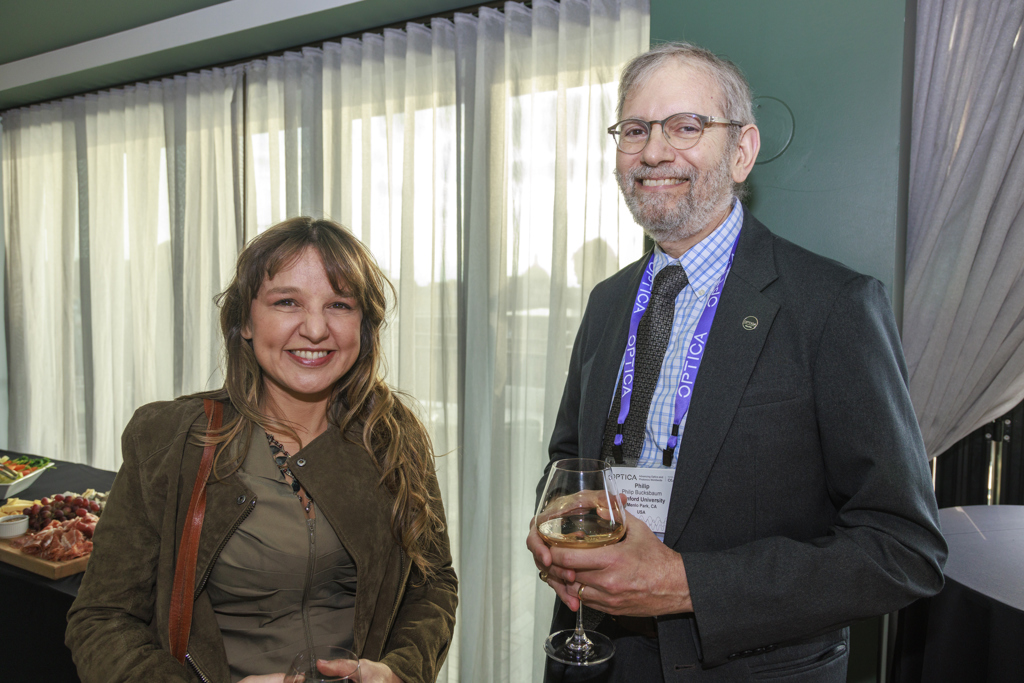Science pushing boundaries at Optica’s Leadership Meeting
Leah Poffenberger, Corporate Communications Manager, Optica
Two incredible plenaries provided a respite from the hard work done by Optical volunteer leadership at our annual Leadership Meeting in Washington, DC, 26-28 March. Nobel Laureate and James Webb Space Telescope (JWST) Senior Project Scientist John Mather inspired the group with images and science coming back from JWST. Columbia University professor and New York Times columnist Zeynep Tufekci discussed how to navigate ethical issues in science and technology—in particular the exponentially important emergence of large language model artificial intelligence.
Inventing Optics to Find the Unknown—John Mather
JWST was launched on December 25, 2021 and since 12 July 2022 has been our eyes into the early universe, a window for viewing our neighbors in our own solar system and a probe of distant worlds circling strange stars. Mather shared three big surprises so far: that all the instrumentation works better than expected, that the density of galaxies in the early universe is higher than anticipated and that these early galaxies grew rapidly.

Caption: The Cartwheel Galaxy, captured by the JWST.
Mather shared iconic JWST images and explained the science carried in them. The first JWST image, the Deep field, captured ancient galaxies—including one 13.5 billion years old—repeated and distorted through the effects of gravitational lensing. The Cartwheel Galaxy, 500 million light-years away in the Sculptor constellation, sports two rings — a bright inner ring and a surrounding, colorful ring. These two rings expand outwards from the center of a high-speed collision between a large spiral galaxy and a smaller galaxy not visible in this image.
Filaments of gas and dust in the grandiose spiral arms winding outwards from the Phantom Galaxy (M74) appear in detail. An unobscured view of the nuclear star cluster at the center of M74 seen with the Mid-InfraRed Instrument provides with new insights into the earliest phases of star formation. Images of the famous Pillars of Creation from the Near-Infrared Camera (NIRCam) provide another window on star formation. NIRCam allows for a precise count of newly formed stars among the massive knots of gas and dust in the Pillars.

Caption: M74, the Phantom Galaxy, captured by the JWST.
While the JWST continues to send back awe-inspiring, science-rich images, it will soon be joined by the next planned space telescope. Launching in July 2023, the Euclid mission from European Space Agency (ESA), with contributions from the USA, will survey the sky, looking for the effects of dark matter and dark energy. It has a 1.2 m telescope and observes at visible and near IR wavelengths. Euclid will explore the expansion and structure of the universe. As more and more powerful telescopes search our skies for new discoveries, “don’t be surprised when something wild happens in astronomy!” said Mather.
Ethics and AI—Zeynep Tufekci
Growing up in Turkey, Tufekci loved math and science—especially physics. But she had a penchant for asking the hard ethical questions from an early age. She soon encountered the atom bomb problem, the very real possibility that one’s search for truth and beauty may unintentionally unleash enormous destructive power in the world. She chose to pursue computer science. “It was a field I thought was devoid of ethical issues,” she said. She became a computer scientist and working programmer, but eventually the bigger questions pulled her back into a PhD program. Now, as a sociologist and author, she explores the societal impacts of technological advances like artificial intelligence (AI) and machine learning (ML), and it is clear that computer science must wrestle with a host of ethical questions.

Caption: Zeynep Tufecki with 2014 Optica President Philip Bucksbaum after her talk.
In her plenary talk, Tufekci outlined the exponential growth of AI/ML capabilities, beginning with Google teaching a computer to recognize photos of cats just 11 years ago. The landmark “cat” paper proved the concept that a computer could learn by being shown images instead of being programed. As AI/ML technology becomes more accessible, with programs like ChatGPT, Tufekci cautions that “we haven’t yet grappled with what these systems can do that we can’t.”
Tufekci discussed a model that was fed Instagram posts and began predicting who would develop clinical depression. The issue is that we don’t know what exactly the model was looking for to make these predictions—the innerworkings of these AI/ML models are essentially a black box. These unknowns can make navigating using AI for applications like hiring more difficult. “It’s possible AI could hire more diversely, but it might choose to discriminate in other ways,” says Tufekci. An AI model might decide to select for people with high productivity by screening out people who are depressed or likely to become pregnant, for example.
Another potential barrier for AI usage is “hallucination”—programs like ChatGPT provide accurate information about 80% of the time, but the other 20% may be “very well written nonsense.” Telling the difference is difficult, and reducing incidences of AI hallucination remains a technological challenge. Tufecki, however, isn’t worried about runway AI (or “the terminator problem”), but what people with power will choose to use it for, like intending to target certain populations. “We need people who understand this technology to be more involved with these ethical discussions,” said Tufekci. “Like the early debates around nuclear energy, we need the scientific community to be a larger voice to discuss the inflection points.”
